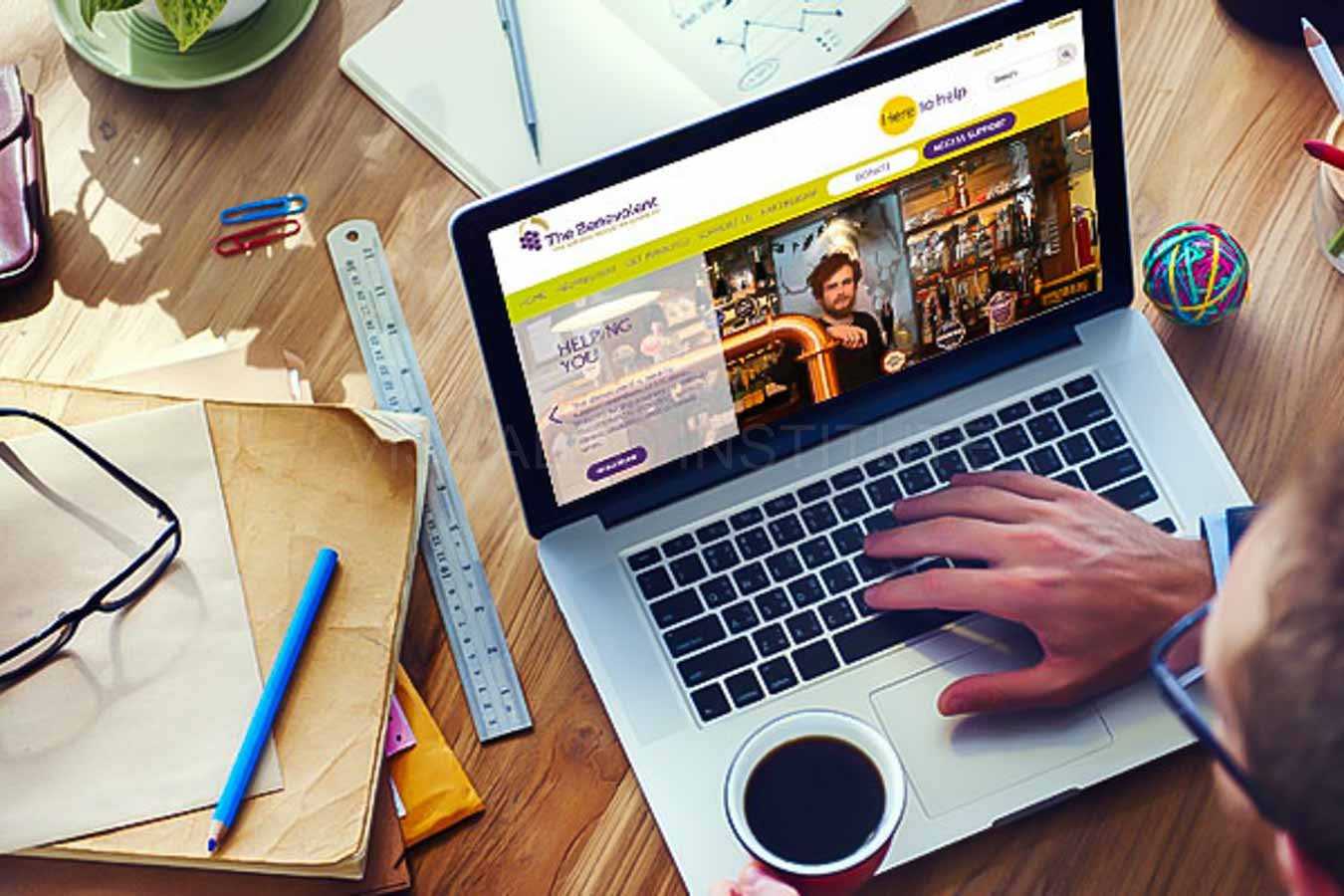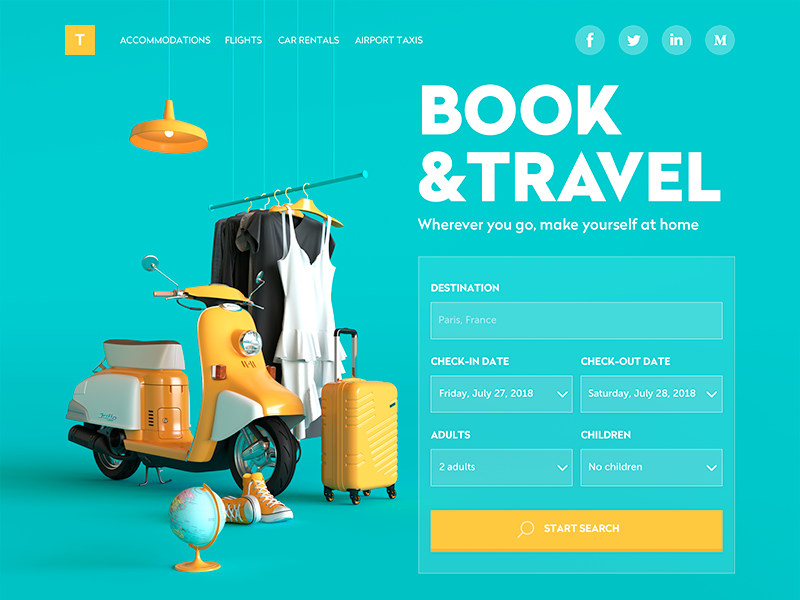How to Successfully Combine Looks and Capability in Web Design
When developing an internet site, you need to strike an equilibrium between appearances and capability. It's not practically looking good; your design ought to likewise serve a function and guide users efficiently. By focusing on simpleness and user-friendly navigation, you can produce an engaging experience. What components really boost usability while preserving aesthetic charm? Let's check out the key principles that can lead to an unified blend of charm and feature.
Recognizing the Importance of Aesthetics and Performance
When you develop a web site, comprehending the equilibrium between aesthetics and performance is important for creating an efficient user experience. An aesthetically attractive site grabs focus, but it's the functionality that maintains users engaged. Site visitors will rapidly shed interest and leave.Consider your target audience and what attracts them in if your site looks excellent but is tough to navigate. You desire to create a design that reflects your brand while ensuring convenience of usage. Structured layouts, instinctive navigation, and clear phone calls to activity can enhance both aesthetics and functionality.

Concepts of Efficient Internet Style
To develop an efficient website design, you require to comply with a number of key concepts that boost both individual experience and visual allure. Prioritize simpleness; a clean design aids users navigate conveniently. Use a constant color pattern and typography to preserve comprehensibility throughout your site. This cultivates knowledge and trust.Next, guarantee your layout is responsive. Customers gain access to internet sites on numerous gadgets, so your layout should adapt effortlessly. Focus on visual power structure; emphasize essential aspects with size, color, or positioning to direct individuals' focus.Finally, include enough white area. It stops clutter and makes material a lot more absorbable. Bear in mind, reliable website design balances looks and capability, so every design selection need to offer a function. By complying with these principles, you'll produce a site that's not only visually appealing but additionally user-friendly, eventually keeping visitors engaged and encouraging them to return.
Prioritizing Customer Experience
When prioritizing customer experience, you'll wish to begin by comprehending what your individuals genuinely require. Streamlining navigating style can make a significant difference in just how easily they find what they're looking for. Boosting aesthetic pecking order assists assist their interest to the most crucial aspects on your website.
Understanding User Demands
Comprehending user requirements is important for developing an engaging internet experience that maintains site visitors returning. To attain this, you must determine the objectives and choices of your target market. Beginning by carrying out user research, like surveys or meetings, to gather understandings on what users worth most. When engaging with similar web sites, pay focus to their discomfort factors and challenges. This info enables you to customize your layout, guaranteeing capability straightens with customer expectations. Furthermore, think about producing user characters that stand for different sections of your audience, helping you visualize their needs throughout the design process. When you prioritize comprehending customer demands, you create a web site that not just looks great however likewise provides a seamless, pleasurable experience that promotes loyalty.
Simplifying Navigating Design

Enhancing Aesthetic Pecking Order
A strong aesthetic hierarchy is necessary in assisting users through your website and ensuring they involve with crucial web content. To accomplish this, utilize dimension, spacing, and shade purposefully. Make vital aspects like headings bigger and bolder than body text, attracting interest instantly. Make use of contrasting shades to highlight phone call to action, encouraging clicks. Furthermore, utilize sufficient white area to different areas, making material digestible and inviting.Consider the flow of info; prepare components logically, leading users' eyes from one indicate the following. Use aesthetic cues, like arrows or lines, to direct interest. By focusing on visual power structure, you enhance user experience and enhance the chance of conversions, ensuring your web site is both aesthetically pleasing and functionally effective.
Color Theory and Its Effect On Functionality
While picking the ideal colors for your internet site might feel like a small information, it substantially affects functionality and user experience. Color affects how individuals regard details and can enhance or impede navigation. For example, contrasting shades can aid important components attract attention, making it less complicated for visitors to locate what they need.Additionally, take into consideration the psychology of shades: blue usually influences trust fund, while red produces urgency. Recognizing your target market can guide your color selections, assuring they reverberate well.Moreover, regular color pattern assist build brand identification, making your site much more memorable. Nonetheless, beware-- also numerous colors can bewilder individuals. Stay with a limited combination that complements your content and keeps clarity.Incorporating access is also necessary; verify your shade combinations are pleasant for those with visual disabilities. By attentively applying shade theory, you'll boost usability and produce an extra appealing individual experience.
Typography: Balancing Design and Readability
Color options established the stage for your site, however typography plays an equally crucial function in improving customer experience. You want your message to communicate clearly while likewise mirroring your brand's personality. Begin by selecting typefaces that are not just attractive yet also readable. Sans-serif typefaces typically work well for electronic screens, as they're less complicated to check out at numerous sizes.Maintain a pecking order by using various font dimensions and weights; this guides individuals through your content effortlessly. Think about line spacing and letter spacing; also limited can annoy viewers, while too loose can interfere with the flow. Limitation your font style choices to two or three to keep the style cohesive.Finally, always check your typography throughout various devices and web browsers. What looks great on one screen may not on another. Balancing design with readability guarantees that your message resonates, maintaining your target market notified and involved.
Responsive Style: Making Looks Service All Gadgets
To guarantee your internet site looks great on any kind of gadget, you'll need to welcome responsive design principles. This method assurances your website adapts to various screen sizes, giving an optimal user experience. Start by utilizing liquid grids and versatile pictures that scale perfectly. As opposed to dealt with measurements, go with percentages and family member devices, enabling your layout to change dynamically.Next, implement media queries in your CSS. These allow you use various styles based upon tool features, like display size. In this manner, you can maintain visual charm while guaranteeing functionality.Don' t forget touch targets; ensure switches and links are simple to touch on smaller displays. Focus on vital content, so individuals can quickly navigate your website no matter their device. By concentrating on these aspects, you'll create an appealing, visually appealing experience that fulfills the demands of all individuals, whether they're on a tablet, smart device, or desktop .
Carrying Out Use Testing for Constant Improvement
To boost your web layout, you need to set clear use goals that straighten with individual demands. By carrying out customer examinations, you can gather useful comments on how genuine individuals communicate with your website. Assessing these outcomes will certainly help you make notified renovations and produce a more reliable user experience.
Defining Use Goals
While aesthetics can attract customers in, defining functionality objectives is vital for guaranteeing their experience remains smooth and satisfying. Begin by recognizing what you want individuals to attain on your site (website design london Ontario). Consider their tasks, habits, and demands. Are they trying to find details, purchasing, or signing up for a newsletter? Develop clear standards to measure success, like task completion rates or time on job. Focus on instinctive navigating, accessible material, and receptive layout to boost use. Frequently review these objectives as customer assumptions advance. By specifying usability objectives, you create a framework for evaluating and improving your site's performance. This concentrate on functionality not only improves individual contentment yet additionally enhances the total performance of your layout
Performing Customer Examinations
Carrying out individual tests is vital for fine-tuning your site and ensuring it meets your audience's demands. Beginning by determining your target individuals and producing a web design london ontario test plan that details your purposes. Utilize a mix of qualitative and quantitative methods, such as studies, meetings, and task-based observations, to gather thorough responses. Welcome participants to navigate your website while you observe their interactions and note any difficulties they run into. Urge open dialogue to capture their thoughts and feelings concerning the style and functionality. Maintain sessions short and focused, guaranteeing you cover key locations without overwhelming customers. Lastly, make certain to record all findings, as this details will be very useful for making informed style choices that improve both aesthetic appeals and usability.
Examining Test Results
Exactly how can you effectively examine the results of your use tests to drive continual improvement? Start by classifying feedback right into typical motifs. Search for patterns in customer behavior that highlight discomfort factors or locations for enhancement. Usage quantitative data, like task conclusion prices and time on task, to determine functionality fairly. Don't neglect to consider qualitative understandings from user comments; they typically disclose underlying concerns that numbers can not reveal. Focus on one of the most impactful searchings for and create actionable products for your layout group. Remember, it's regarding iterating-- carry out adjustments, after that examination again. This cycle of screening, analyzing, and refining helps you balance looks and capability, guaranteeing your web site satisfies user requirements successfully while preserving aesthetic allure.
Regularly Asked Inquiries
Just how Do I Pick the Right Shade Palette for My Internet site?
To choose the right color scheme for your website, consider your brand's personality, target audience, and psychological influence (website design london Ontario). Usage shade psychology, create harmony, and assurance readability. Examination mixes to see what resonates finest with site visitors
What Equipment Can Aid With Internet Style Aesthetics and Functionality?
You can use devices like Adobe XD, Figma, and Lay out to improve your website design's appearances and capability. These systems use user-friendly interfaces, cooperation attributes, and pre-made themes to enhance your creative procedure and enhance your designs.
How Can I Include Animations Without Jeopardizing Performance?
To incorporate animations without compromising capability, prioritize refined effects that boost individual experience. Usage CSS computer animations for smoother communications, assurance quick tons times, and examination on different gadgets to maintain efficiency while adding aesthetic charm.
What Are Common Mistakes to Stay Clear Of in Website Design Aesthetic Appeals?
When creating, avoid cluttered designs, inadequate color selections, and inconsistent typefaces. Do not neglect mobile responsiveness, as it can alienate individuals. Verify your layout lines up with your brand name, creating a smooth experience that involves visitors properly.
Just how Usually Should I Update My Site's Style for Optimal Appearances?
You ought to update your internet site's layout every 1-2 years to stay on top of trends and preserve ideal appearances. Frequently restoring visuals helps engage visitors and guarantees your site continues to be enticing and easy to use. When you create an internet site, understanding the equilibrium in between aesthetics and functionality is vital for developing an effective customer experience. To create an effective web style, you need to adhere to numerous vital concepts that enhance both customer experience and visual allure. Users gain access to internet sites on numerous tools, so your style needs to adapt perfectly. When focusing on individual experience, you'll desire to begin by recognizing what your individuals really require. Begin by carrying out individual research, like studies or interviews, to collect insights on what individuals value most.